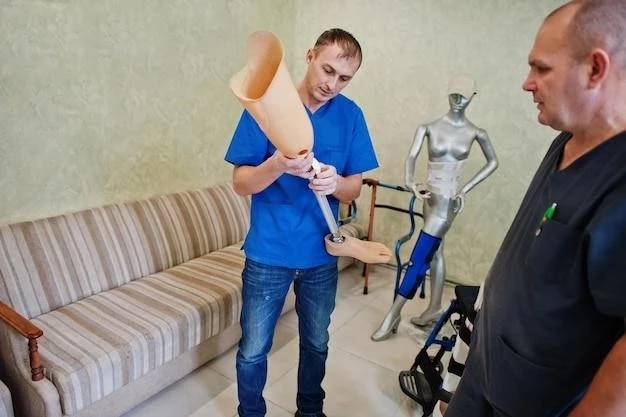Understanding Emery-Dreifuss Muscular Dystrophy
Emery-Dreifuss Muscular Dystrophy is a genetic condition that affects muscles and the heart․ This article provides an in-depth understanding of the disease, its genetic causes, symptoms, diagnosis through various methods, and treatment options like Echocardiogram․
Introduction to Emery-Dreifuss Muscular Dystrophy
Emery-Dreifuss Muscular Dystrophy (EDMD) is a rare genetic disorder characterized by muscle wasting and weakness, joint stiffness, and heart problems․ It was first described by British and German physicians Alan Emery and Fritz Dreifuss․ EDMD primarily affects muscles in the upper arms and lower legs․ The condition is caused by mutations in genes responsible for encoding specific proteins that play crucial roles in maintaining the structure and function of muscle cells and nuclei․ This leads to abnormalities in the muscle fibers and the heart, particularly the cardiac conduction system․ People with EDMD often develop heart issues such as arrhythmias, heart block, and dilated cardiomyopathy․ Although there is currently no cure for EDMD, treatment focuses on managing symptoms and complications․ Physical therapy and cardiac monitoring are essential aspects of care for individuals with this condition․ Research into potential gene therapies and other treatment advancements are ongoing, offering hope for improved outcomes for those affected by Emery-Dreifuss Muscular Dystrophy․
Genetic Causes
Emery-Dreifuss Muscular Dystrophy is primarily caused by mutations in genes encoding proteins critical for muscle and heart function․ Mutations in the EMD gene, LMNA gene, FHL1 gene, and other genes can lead to the development of EDMD․ The EMD gene provides instructions for producing emerin, a protein involved in maintaining the structure of the cell nucleus and regulating gene expression․ Mutations in the EMD gene disrupt these functions, contributing to the muscle and heart abnormalities observed in individuals with EDMD․ Similarly, mutations in the LMNA gene, which encodes the proteins lamin A and lamin C, can lead to altered nuclear structure and function, affecting muscle cells and cardiac tissues․ Mutations in the FHL1 gene, responsible for producing four-and-a-half LIM domain protein 1, have also been linked to EDMD․ Understanding the genetic causes of EDMD is crucial for accurate diagnosis, genetic counseling, and potential targeted treatments in the future․ Researchers continue to explore the complex genetic mechanisms underlying this condition to develop more effective therapeutic interventions․
Signs and Symptoms
Emery-Dreifuss Muscular Dystrophy presents with a combination of muscle-related and cardiac symptoms․ Muscle symptoms include muscle weakness, particularly in the upper arms and lower legs, muscle wasting, and joint stiffness․ Patients may experience difficulty with activities requiring strength and mobility․ Cardiac symptoms often manifest as heart rhythm abnormalities, such as arrhythmias, heart block, or even cardiomyopathy․ These cardiac issues can lead to palpitations, fatigue, shortness of breath, and chest pain․ Some individuals with EDMD may also exhibit contractures, where joints become fixed in a bent position due to muscle problems․ It is essential for individuals with Emery-Dreifuss Muscular Dystrophy to receive regular cardiac evaluations, as heart complications are a significant concern․ Early detection and management of symptoms are crucial for optimizing quality of life and preventing potentially severe cardiac complications associated with this genetic condition․
Diagnosis
Diagnosing Emery-Dreifuss Muscular Dystrophy involves a combination of clinical assessments, genetic testing, and imaging studies․ A thorough physical examination may reveal muscle weakness, contractures, and other characteristic features of the condition․ Genetic testing plays a crucial role in identifying mutations in genes such as EMD, LMNA, or FHL1 that are associated with EDMD․ Additionally, electromyography (EMG) can help assess muscle function and detect abnormalities in muscle activity․ Imaging studies, including muscle MRI scans and ⎻ Echocardiogram, are valuable for evaluating muscle changes and monitoring cardiac health in individuals with EDMD․ Cardiac evaluations, such as electrocardiograms (ECG) and echocardiograms, are essential for detecting and monitoring heart rhythm abnormalities and other cardiac complications․ An interdisciplinary approach involving neurologists, geneticists, cardiologists, and other healthcare providers is necessary to confirm a diagnosis of Emery-Dreifuss Muscular Dystrophy and develop an appropriate management plan tailored to the individual’s specific needs․
Treatment Options
Currently, there is no cure for Emery-Dreifuss Muscular Dystrophy, so treatment focuses on managing symptoms and improving quality of life․ Physical therapy plays a crucial role in maintaining muscle function, flexibility, and range of motion․ Assistive devices and orthotics may be recommended to support mobility and reduce the risk of falls․ Cardiac medications such as beta-blockers or antiarrhythmic drugs may be prescribed to manage heart rhythm abnormalities․ Regular cardiac monitoring through electrocardiograms and echocardiograms is essential to monitor heart function and detect any changes early․ In some cases, individuals with EDMD may require pacemakers or other cardiac devices to regulate heart rhythm․ Genetic counseling can help individuals and families understand the genetic implications of the condition and make informed decisions about family planning․ Research into potential gene therapies and novel treatment approaches continues to offer hope for the future management of Emery-Dreifuss Muscular Dystrophy․
Management and Care
Effective management and care for individuals with Emery-Dreifuss Muscular Dystrophy involve a multidisciplinary approach aimed at addressing the complex needs associated with this genetic condition․ Regular physical therapy and occupational therapy help maintain muscle strength, flexibility, and independence in daily activities․ It is essential to monitor and manage cardiac health through regular check-ups, including electrocardiograms and echocardiograms, to detect and address any heart rhythm abnormalities or complications promptly․ Nutritional monitoring and guidance may be necessary to ensure adequate nutrient intake and support overall health․ Psychological support and counseling can also be beneficial for both patients and their families in coping with the emotional challenges of living with a chronic condition․ Care coordination among healthcare providers, including neurologists, cardiologists, physical therapists, and genetic counselors, is vital to ensure comprehensive and personalized care for individuals with Emery-Dreifuss Muscular Dystrophy․
Prognosis and Complications
The prognosis for individuals with Emery-Dreifuss Muscular Dystrophy varies depending on the severity of symptoms and cardiac involvement․ While EDMD is a progressive condition, the rate of progression can differ among individuals․ Complications commonly associated with EDMD include heart rhythm abnormalities, heart failure, respiratory issues due to muscle weakness affecting the respiratory muscles, and joint contractures․ Cardiac complications, including arrhythmias and heart block, pose significant risks and require close monitoring and management․ Physical limitations resulting from muscle weakness can impact mobility and daily activities․ Regular cardiac evaluations and prompt intervention for cardiac issues are crucial in improving outcomes and quality of life․ With advancements in medical care and ongoing research into potential treatments, individuals with Emery-Dreifuss Muscular Dystrophy can receive comprehensive care to address complications effectively and enhance their overall prognosis․
Research and Future Directions

Ongoing research in the field of Emery-Dreifuss Muscular Dystrophy is dedicated to understanding the underlying genetic mechanisms, developing targeted therapies, and improving overall management of the condition․ Recent studies have focused on gene editing technologies, such as CRISPR-Cas9, to correct genetic mutations associated with EDMD․ These promising advancements may offer potential gene therapies in the future․ Additionally, researchers are exploring the role of various proteins involved in muscle and cardiac function to identify new treatment targets․ Clinical trials are underway to assess the safety and efficacy of potential pharmacological interventions for managing symptoms and complications of EDMD․ Collaborative efforts between academic institutions, healthcare providers, and patient advocacy groups drive advancements in the field and offer hope for innovative treatment options․ Future directions in research aim to enhance early diagnosis, optimize personalized treatment approaches, and ultimately improve outcomes for individuals affected by Emery-Dreifuss Muscular Dystrophy․
Coping Strategies for Patients and Families
Emery-Dreifuss Muscular Dystrophy can present significant challenges for patients and their families, both physically and emotionally․ Coping strategies play a crucial role in managing the impact of the condition on daily life․ Building a strong support network that includes healthcare professionals, support groups, and family members can provide emotional support and practical assistance․ Open communication and honest discussions about the condition, its progression, and treatment options help individuals and families navigate the complexities of EDMD․ Engaging in activities that promote physical and mental well-being, such as low-impact exercises, relaxation techniques, and hobbies, can help improve quality of life and reduce stress․ Seeking counseling or therapy can also provide valuable tools for coping with the emotional toll of living with a chronic illness․ Educating oneself about the condition, advocating for appropriate medical care, and maintaining a positive outlook are essential aspects of coping with Emery-Dreifuss Muscular Dystrophy․
Impact on Daily Life
Emery-Dreifuss Muscular Dystrophy can have a profound impact on the daily lives of individuals affected by the condition․ The muscle weakness, joint stiffness, and fatigue associated with EDMD can make routine tasks challenging and impact mobility․ This may require adjustments to daily activities and routines to accommodate physical limitations․ Tasks that involve strength, such as lifting objects or climbing stairs, may become more difficult over time․ Individuals with EDMD may rely on assistive devices like walkers or mobility aids to move around safely․ The cardiac complications of the condition, such as arrhythmias or heart failure, can also influence daily life, necessitating careful monitoring and potential lifestyle modifications․ Managing the emotional and psychological aspects of living with a chronic illness is also essential․ Support from healthcare professionals, family, and peers, as well as maintaining a positive outlook, can help individuals cope with the challenges posed by Emery-Dreifuss Muscular Dystrophy and maintain a fulfilling lifestyle․
Conclusion
In conclusion, Emery-Dreifuss Muscular Dystrophy is a complex genetic disorder that affects muscles and the heart, presenting a range of symptoms and complications that impact daily life․ While there is currently no cure for EDMD, advancements in research offer promising prospects for targeted therapies and improved management strategies․ Through early diagnosis, comprehensive care, and ongoing support, individuals with Emery-Dreifuss Muscular Dystrophy can enhance their quality of life and address the challenges posed by the condition․ Coping strategies, effective management, and a supportive network are key components in navigating the physical and emotional aspects of living with EDMD․ As research continues to progress, the future holds hope for enhanced treatment options and better outcomes for those affected by this rare genetic condition․ By raising awareness, promoting research, and providing holistic care, the medical community can strive towards improving the lives of individuals and families impacted by Emery-Dreifuss Muscular Dystrophy․
